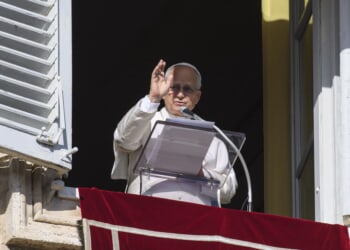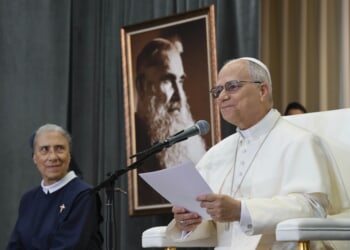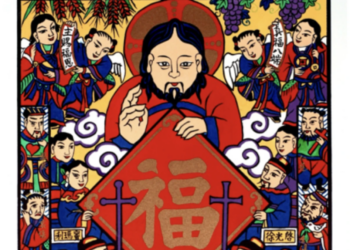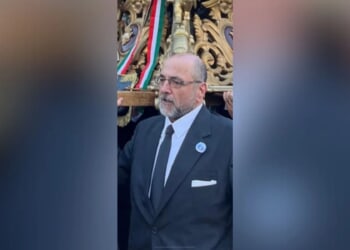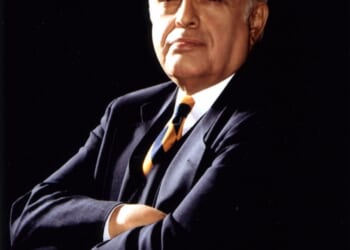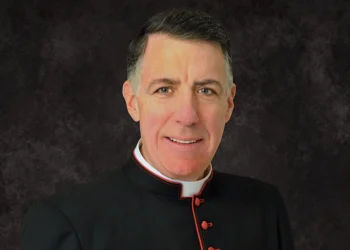Ann Arbor, Michigan, Sep 28, 2025 /
06:00 am
A tradition dating from the 11th century has been brought to Christendom College in Front Royal, Virginia, extending an enduring symbol of faith and pilgrimage. A jumbo-sized thurible, commissioned by the college and made in Spain, now embellishes the college’s Christ the King chapel.
The connections between Christendom College and the Catholic culture of Spain date back to even before the college’s founding in 1977. Its first president and co-founder, Warren Carroll, took students to Spain on several visits to learn Spain’s history and experience life at El Escorial monastery near Madrid.
Among other works, Carroll, a historian, authored “Isabel of Spain: The Catholic Queen” and “The Last Crusade: Spain 1936” with an interest in defending Catholic faith and culture, said Timothy O’Donnell, the college’s president emeritus, in an interview with CNA.
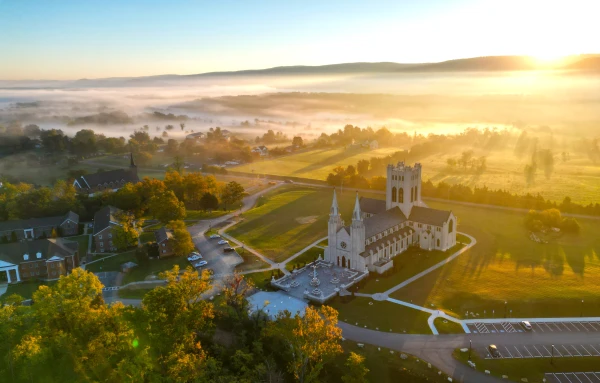
Believed to be one of the largest thuribles or censers in the world, the famed Botafumeiro is a giant thurible used at the Santiago de Compostela Cathedral in northern Spain, which has been a pilgrimage destination for centuries, rivaled only by Rome and Jerusalem.
According to tradition, it is the burial place of St. James the Greater, who evangelized the Iberian Peninsula. In a centuries-old tradition, the massive censer, which weighs hundreds of pounds, is swung from ropes when pulled by a team of eight men at the transept of the historic church on feast days. It weighs more than 176 pounds and is over 6 feet tall.
O’Donnell recalled that St. John Paul II said in a homily in 1982, as the first pilgrim pope to Santiago: “This place, so dear to Galicians and Spaniards alike, has in the past been a point of attraction and convergence for Europe and all of Christendom.”
According to O’Donnell: “I was so moved by that because that is the name of our college. So, on certain anniversaries, we would take pilgrimages to Santiago.”
Seeing the giant thurible there ultimately gave him the idea to reproduce such a symbol of faith. “I thought it would be awesome to have something like this in the new chapel.” He turned to Heritage Liturgical, which designed and realized the project.
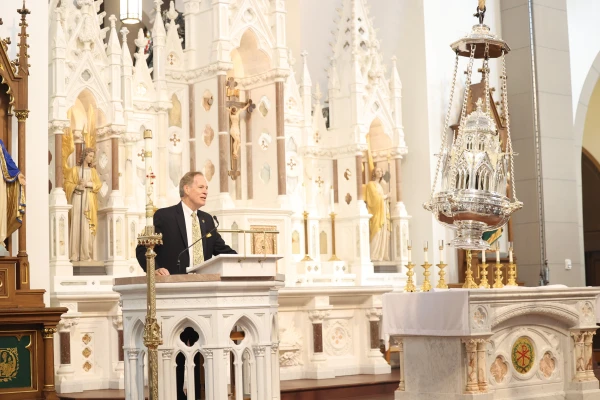
“Now people need not go as far away as Spain to see this beautiful thing and incense going up to heaven like the prayers of the faithful and angels going to God on high,” he said. In a tradition dating back to the Old Testament, costly incense was a sacrifice; after the coming of Christ, it joins our prayers with his perfect prayer and sacrifice.
Instead of producing an exact reproduction of the Botafumeiro in Spain, Heritage Liturgical executed a censer that echoes the design of the chapel. Enzo Selvaggi, principal and creative director of Heritage Liturgical, told CNA that Christendom’s monumental thurible was “designed in a cogent and well-defined Gothic Revival mode to fit the architecture of the college’s Chapel of Christ the King.”
Emilio León, a silversmith of Córdoba, Spain, was selected for the project and helped restore the original Botafumeiro. Starting in 2021, León sculpted and chiseled for a year and a half to complete the work, which is silver-plated brass.
In an email to CNA, León wrote: “I incorporated my spiritual and religious values, just as I do in all my work, giving my best effort, knowing that it is for the glory of God.” León belongs to a royal fraternity that preserves Catholic traditions such as Holy Week processions and the dignity of sacred spaces.
León is also working on other projects for Heritage Liturgical to be installed in the U.S. For Catholics in Spain, he continued, the Botafumeiro represents “the grandeur of Christ the King and the apostle James.”
(Story continues below)
Subscribe to our daily newsletter

Christendom’s thurible is normally displayed near the image of the Virgin Mary in the chapel. On feast days of the Church, it is brought near the central altar where it is hoisted on chains and swung by senior students, much in the tradition of Spain. The next feast day for swinging the grand censer will be the solemnity of Our Lord Jesus Christ, King of the Universe, on Nov. 23.
Selvaggi told CNA that in works produced by Heritage Liturgical, the Catholic principle of sacramentality applies at their conception so that designers and artists use matter, as do theologians, to “make a spiritual reality encounterable in the world.”
Both Selvaggi and León are working on other projects destined for the U.S., including helping to restore churches in Nebraska and Georgia, and designing mosaics for churches in Wisconsin. The message from the company affirmed that the new thurible at Christendom College is “captivating not only because of its size and beauty, but more importantly, because it reveals something that already exists: the love of God that causes us to send our prayers rising up to God.”



